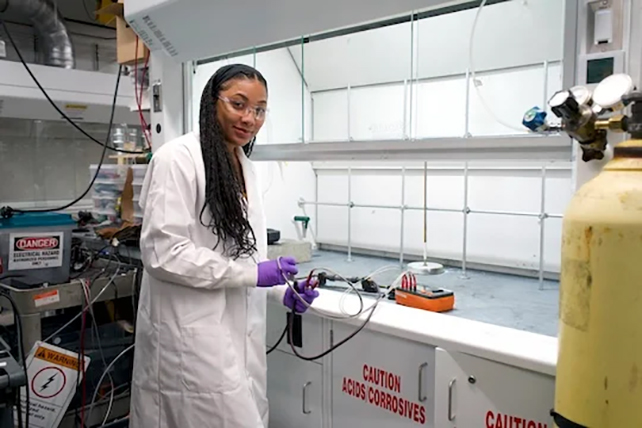Per- and polyfluoroalkyl substances (PFAS), or 'forever chemicals', have spread almost everywhere on Earth, and are increasingly being linked to poor health. Now we might have a new and much-needed way of destroying them.
These chemicals got their nickname because they stick around in the environment and are very difficult to get rid of, but a team led by researchers from Rice University in Texas found that extreme temperatures (exceeding 3,000 °C or 5,432 °F) could quickly break down PFAS.
Not only that, but the method pioneered by the researchers produces graphene from granular activated carbon (GAC), the material that captures PFAS from a sample. The forever chemicals themselves are turned into inorganic fluoride salts.

"Our method doesn't just destroy these hazardous chemicals; it turns waste into something of value," says chemist James Tour, from Rice University.
"By upcycling the spent carbon into graphene, we've created a process that's not only environmentally beneficial but also economically viable, helping to offset the costs of remediation."
GAC has previously been used as a way of removing PFAS from water, but it then becomes a hazardous material itself. By using this sudden and sharp heating process, known as flash joule heating (FJH), the material actually gets upcycled. Not only is that kinder to the environment, it gets back some of the cost of the cleanup.
The researchers were able to show that their method removed 99.98 percent of perfluorooctanoic acid – one of the most common PFAS – from the GAC.
Via computer simulations in addition to their lab experiments, the team was able to figure out that the extreme heat helps snap apart the bonds inside PFAS molecules, with sodium and calcium salts acting as mineralizing agents.

"This dual-purpose approach is a game changer," says materials scientist Phelecia Scotland, from Rice University.
"It transforms waste into a resource while providing a scalable, cost-effective solution to an urgent environmental issue."
The methods outlined here are quick and cheap, and use a relatively low amount of energy compared to other PFAS removal processes. The researchers are confident that they can be scaled up to be used more widely, and with other forever chemicals.
Part of the reason these chemicals have become so ubiquitous is they're very useful, and essential to numerous modern-day products: they're used in manufacturing to make materials resistant to heat, water, and oil, and there are now over 9,000 types of PFAS in total.
Finding ways to remove them from the environment safely and quickly could be a more practical approach than stopping their use altogether – especially as scientists discover more about how potentially toxic they can be for humans, wildlife, and ecosystems.
"As concerns over PFAS contamination continue to grow, this breakthrough offers hope for safeguarding water quality and protecting public health worldwide," says Scotland.
The research has been published in Nature Water.
